Ben Blakeley
-
The Importance of Summer Scouting for a Successful Hunting Season
By Ben Blakeley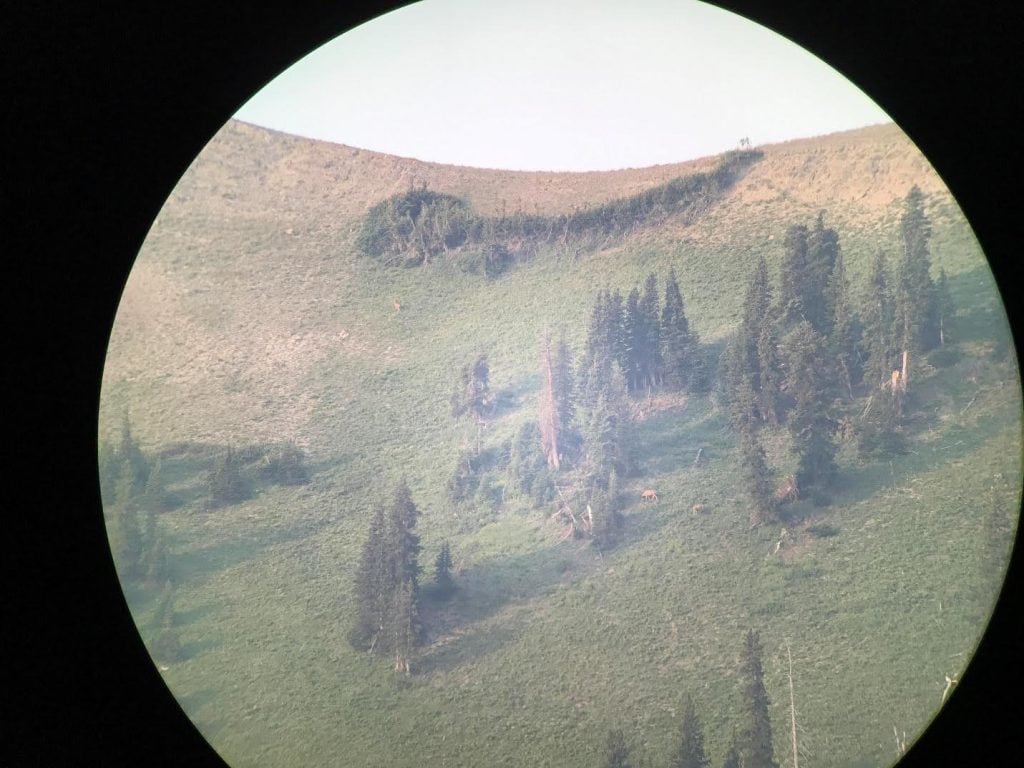 Summer scouting is something I look forward to every year. Although I never seem to get as much time for it as I’d like, I make an effort to fit it in whenever possible. Over the past several years, I’ve noticed a strong correlation between the amount of time spent scouting and hunting success.
Continue reading →
Summer scouting is something I look forward to every year. Although I never seem to get as much time for it as I’d like, I make an effort to fit it in whenever possible. Over the past several years, I’ve noticed a strong correlation between the amount of time spent scouting and hunting success.
Continue reading → -
Hunting Boot Review: Crispi Briksdal Pro SF GTX Insulated
I’ve been using Crispi Boots for years and I really like them. They’ve yet to let me down. I’ve found them to be comfortable, durable, and always up to the task. My favorite Crispi model for the last several years has been the Briksdal SF. I prefer a very stiff boot, so naturally, the Briksdal SF quickly became my favorite. I’ve used them all over and put many miles on them. When I found out that for 2023 Crispi was revamping many of their boots, including this model, I knew I was going to end up getting a pair. Continue reading →
-
Peax Storm Castle Gaiter: A Comprehensive Hunting Gear Review
 A good set of hunting gaiters can be a game-changer if the conditions are right. Gaiters do a great job at protecting your lower legs and feet, keeping them dry when you’re busting brush and things are wet, and they can also be beneficial for creek crossings if the water isn’t high enough to go over your boots. When I first got a hold of the Peax Storm Castle Gaiters, it could not have been at a more opportune time since my tried-and-true Outdoor Research Crocodile gaiters were finally starting to give up the ghost after several years and many, many miles.
Continue reading →
A good set of hunting gaiters can be a game-changer if the conditions are right. Gaiters do a great job at protecting your lower legs and feet, keeping them dry when you’re busting brush and things are wet, and they can also be beneficial for creek crossings if the water isn’t high enough to go over your boots. When I first got a hold of the Peax Storm Castle Gaiters, it could not have been at a more opportune time since my tried-and-true Outdoor Research Crocodile gaiters were finally starting to give up the ghost after several years and many, many miles.
Continue reading → -
Swarovski ATX 65mm vs 85mm lens comparison
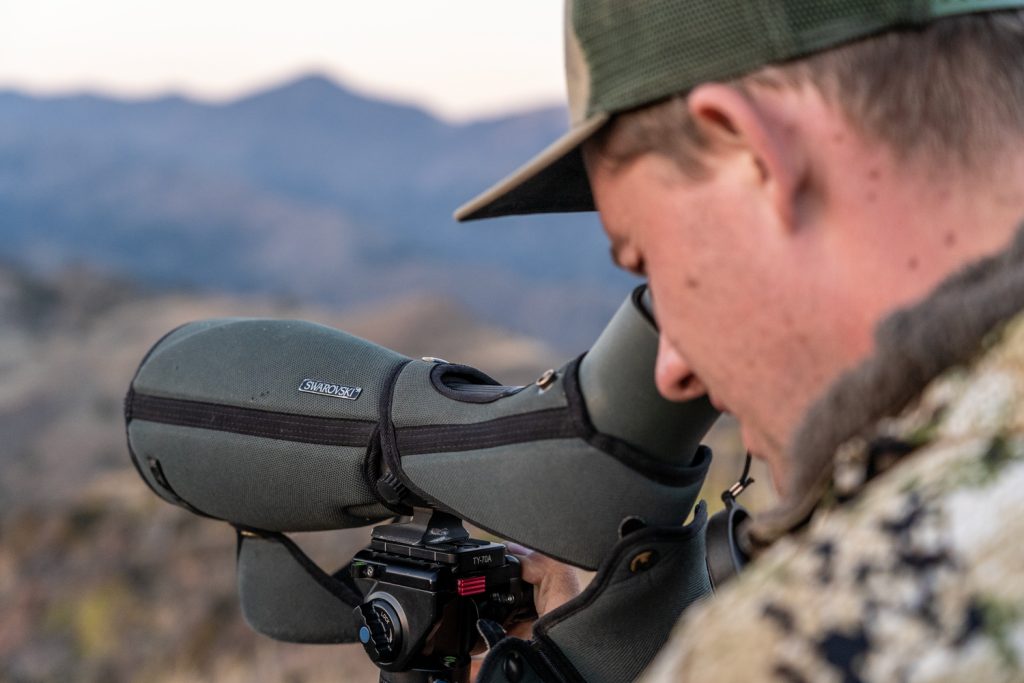 A spotting scope can be one of the most valuable pieces of equipment in your pack. Whoever coined the saying ‘let your eyes do the walking’ was a wise person. A spotting scope can and will save you countless miles of hiking to evaluate animals, see what that flash of movement was under a tree across the draw, or count rings on a ram’s horns to determine their age. The number of situations where a spotting scope is beneficial are too many to count, and if you hunt anywhere that requires spotting animals from a distance, you know exactly what I’m talking about.
Continue reading →
A spotting scope can be one of the most valuable pieces of equipment in your pack. Whoever coined the saying ‘let your eyes do the walking’ was a wise person. A spotting scope can and will save you countless miles of hiking to evaluate animals, see what that flash of movement was under a tree across the draw, or count rings on a ram’s horns to determine their age. The number of situations where a spotting scope is beneficial are too many to count, and if you hunt anywhere that requires spotting animals from a distance, you know exactly what I’m talking about.
Continue reading → -
Our Favorite Multi Use gear
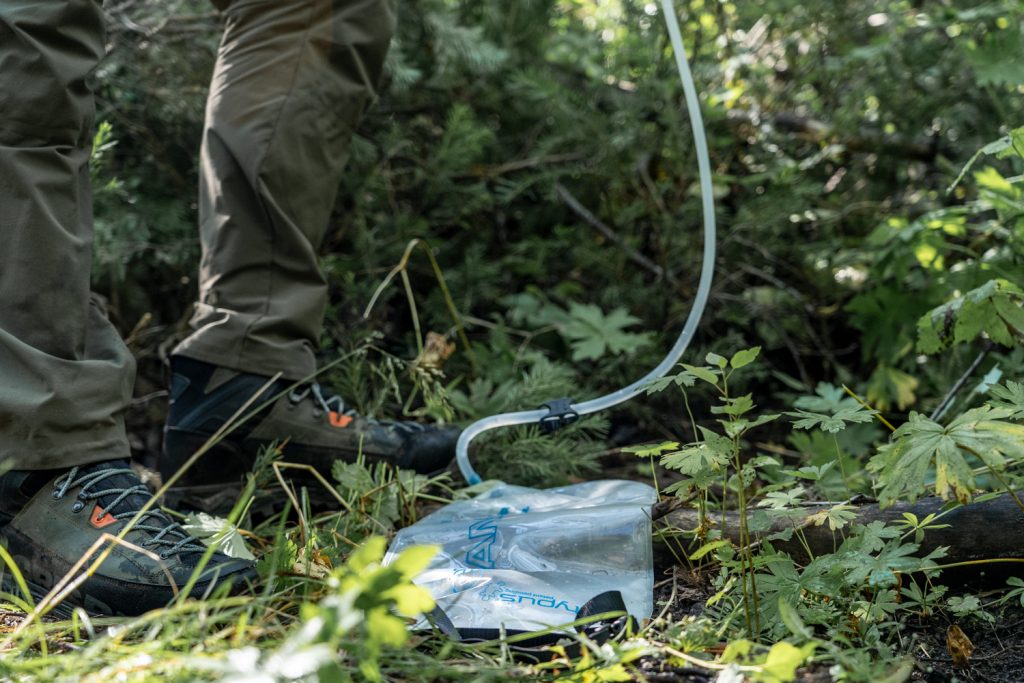 Good, quality gear is supposed to make our outdoor pursuits more comfortable, easier, and more efficient. Most hunting gear is designed with a specific use case in mind, so as we embark on different adventures and our needs vary slightly (or drastically) from one trip to the next, we’re going to accumulate lots of different types, brands, sizes, and weights of gear items. One of the huge benefits of modern gear is that it does what it is designed to do very well, but it may only be good for accomplishing that one task or filling that specific niche. Finding gear that can be useful in multiple scenarios for different situations and tasks can save you money, space, and weight in your pack.
Continue reading →
Good, quality gear is supposed to make our outdoor pursuits more comfortable, easier, and more efficient. Most hunting gear is designed with a specific use case in mind, so as we embark on different adventures and our needs vary slightly (or drastically) from one trip to the next, we’re going to accumulate lots of different types, brands, sizes, and weights of gear items. One of the huge benefits of modern gear is that it does what it is designed to do very well, but it may only be good for accomplishing that one task or filling that specific niche. Finding gear that can be useful in multiple scenarios for different situations and tasks can save you money, space, and weight in your pack.
Continue reading → -
Down vs. Synthetic
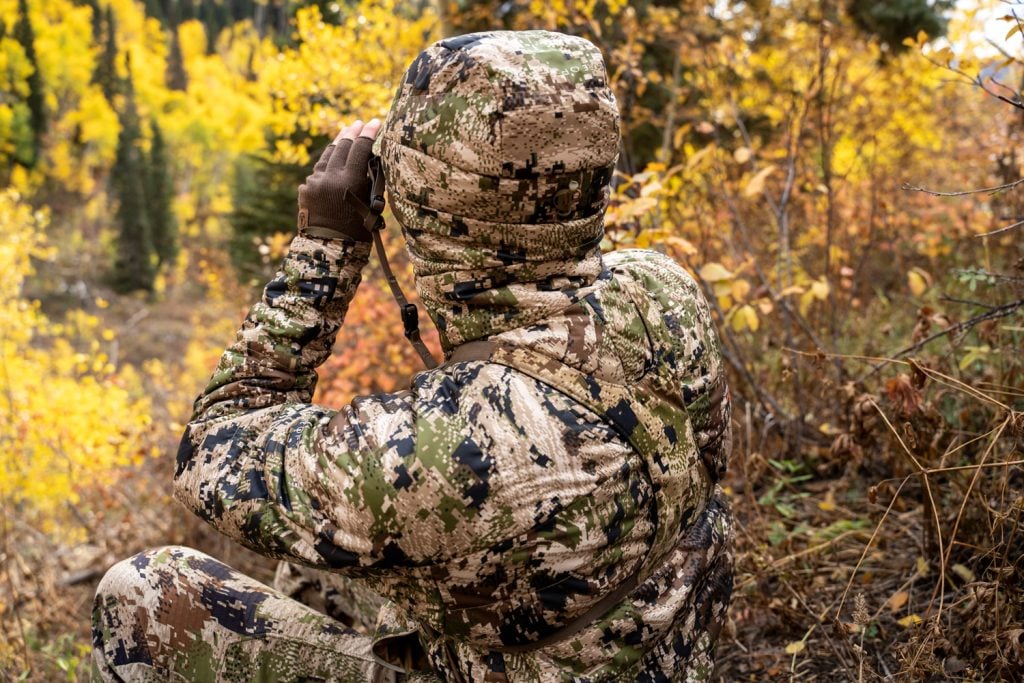 When it comes to choosing how to keep warm in the outdoors, we’re lucky to have so many options. When choosing gear to take on a hunt, or any outdoor excursion, the question of down or synthetic may have crossed your mind before. Down insulation is the fluffy undercoat feathers that come from ducks, geese and other waterfowl. Synthetic insulation is man-made and is made up of fine polyester filaments that are designed to create pockets of air between the fibers. If you’re like me, you may have more than one option from each category.
Continue reading →
When it comes to choosing how to keep warm in the outdoors, we’re lucky to have so many options. When choosing gear to take on a hunt, or any outdoor excursion, the question of down or synthetic may have crossed your mind before. Down insulation is the fluffy undercoat feathers that come from ducks, geese and other waterfowl. Synthetic insulation is man-made and is made up of fine polyester filaments that are designed to create pockets of air between the fibers. If you’re like me, you may have more than one option from each category.
Continue reading → -
How to Get the Most Out of Your Glass
 Optics have become one of the essential pieces of gear for just about any big game hunt. They can save us many miles of hiking in order to assess game, and they allow us to look at animals without having to be very close and risk spooking them. Optics are one of the biggest advantages we have on a hunt. In order to get the most out of your glass there’s several easy things you can do.
Continue reading →
Optics have become one of the essential pieces of gear for just about any big game hunt. They can save us many miles of hiking in order to assess game, and they allow us to look at animals without having to be very close and risk spooking them. Optics are one of the biggest advantages we have on a hunt. In order to get the most out of your glass there’s several easy things you can do.
Continue reading → -
Important, But Often Forgotten Gear
 We have so much information at the tips of our fingers. Within seconds, you can search online for pretty much anything and start learning about it. When it comes to hunting and the outdoor related topics, you can quickly and easily find information online. From gear reviews and tactics to how-to articles and trip recaps, it’s all just a click away. But there are certain lessons that we will inevitably end up learning on our own the hard way. Maybe we simply never stumbled onto the right article or bit of information that would have helped us be better prepared for a certain situation. I know I have learned a lot from reading reviews, articles, and forum posts about all sorts of different topics, and I also feel like I’ve learned quite a bit through personal experience. The purpose of this article is to go over some items that can be easily overlooked, but be invaluable in the field in the right situation. Alexander Graham Bell once said ‘before anything else, preparation is the key to success.’ Preparation can also be the key to comfort, and more importantly, safety. Here are some items that I will usually have with me on all day trips, and I never head into the backcountry for any extended period of time without.
Continue reading →
We have so much information at the tips of our fingers. Within seconds, you can search online for pretty much anything and start learning about it. When it comes to hunting and the outdoor related topics, you can quickly and easily find information online. From gear reviews and tactics to how-to articles and trip recaps, it’s all just a click away. But there are certain lessons that we will inevitably end up learning on our own the hard way. Maybe we simply never stumbled onto the right article or bit of information that would have helped us be better prepared for a certain situation. I know I have learned a lot from reading reviews, articles, and forum posts about all sorts of different topics, and I also feel like I’ve learned quite a bit through personal experience. The purpose of this article is to go over some items that can be easily overlooked, but be invaluable in the field in the right situation. Alexander Graham Bell once said ‘before anything else, preparation is the key to success.’ Preparation can also be the key to comfort, and more importantly, safety. Here are some items that I will usually have with me on all day trips, and I never head into the backcountry for any extended period of time without.
Continue reading → -
What to Consider When Choosing a Hunting Pack
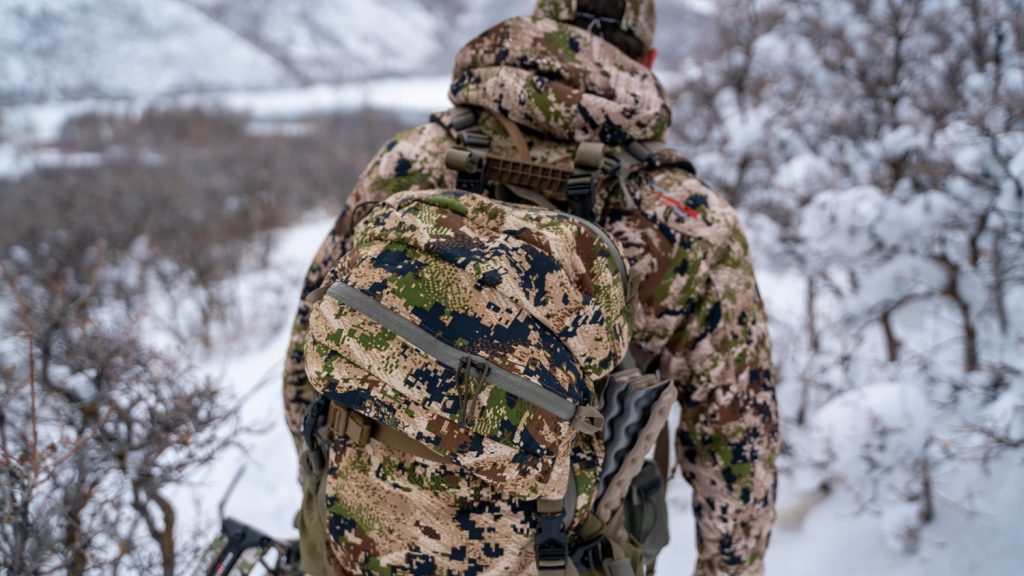 Hunting backpacks have come a long way in recent years. They are stronger, lighter, and more customizable than ever before. A good pack is one of my most utilized and important pieces of gear, second only to a quality pair of boots that fit me well. Packs these days come in all sorts of varieties and sizes, from day packs to expedition packs. You can go ultralight, or with a stouter, heavier pack. The world is your oyster when it comes to choosing a hunting pack. But what you need to decide first and foremost is what am I looking for in a pack? What will your main use cases be: day hunts? Extended backpack hunts? Any and all of the above? Also, what criteria must the pack satisfy to meet your needs (and not anyone else’s)?
Continue reading →
Hunting backpacks have come a long way in recent years. They are stronger, lighter, and more customizable than ever before. A good pack is one of my most utilized and important pieces of gear, second only to a quality pair of boots that fit me well. Packs these days come in all sorts of varieties and sizes, from day packs to expedition packs. You can go ultralight, or with a stouter, heavier pack. The world is your oyster when it comes to choosing a hunting pack. But what you need to decide first and foremost is what am I looking for in a pack? What will your main use cases be: day hunts? Extended backpack hunts? Any and all of the above? Also, what criteria must the pack satisfy to meet your needs (and not anyone else’s)?
Continue reading → -
Briksdal SF GTX Boot Review
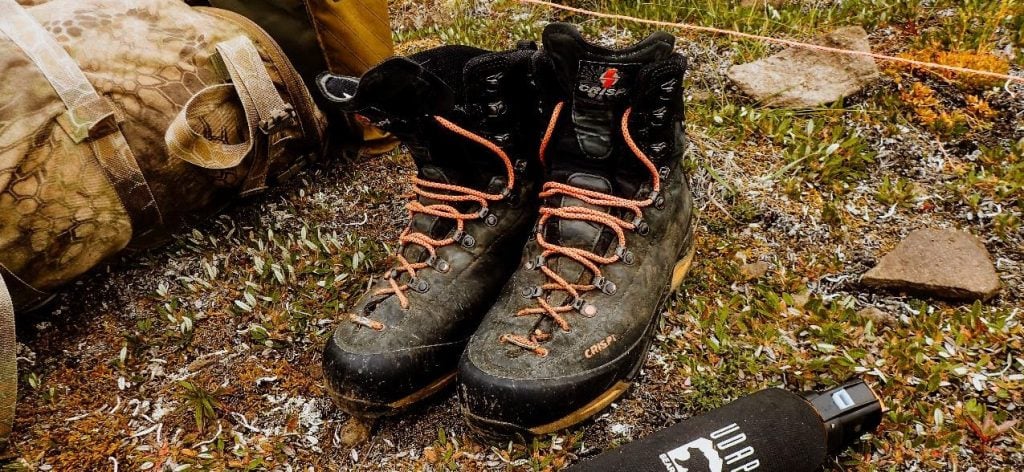 I’ve owned and been using the updated Crispi Briksdal SF boots since they came out in May 2020. I’ve used them on all my adventures so far this year: summer scouting, sheep hunting in Alaska, elk and mule deer hunting, and hiking through 10” of snow to pick up some moose sheds I’d found while hunting before the canyon closed for the winter. I’ve been able to use them in a wide variety of terrain and temperatures, and they’ve yet to let me down. I’ve been very impressed with them, and for me they are the ideal boot.
Continue reading →
I’ve owned and been using the updated Crispi Briksdal SF boots since they came out in May 2020. I’ve used them on all my adventures so far this year: summer scouting, sheep hunting in Alaska, elk and mule deer hunting, and hiking through 10” of snow to pick up some moose sheds I’d found while hunting before the canyon closed for the winter. I’ve been able to use them in a wide variety of terrain and temperatures, and they’ve yet to let me down. I’ve been very impressed with them, and for me they are the ideal boot.
Continue reading → -
Hilleberg - The Tentmaker
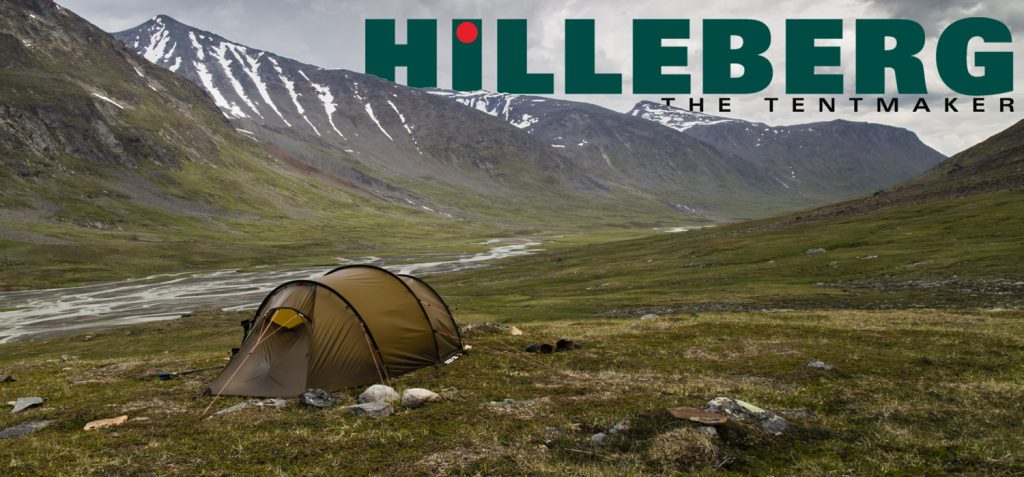 Hilleberg has been a top name in the tent making industry for over 45 years. Their mission is to produce the highest quality lightweight tents available. Hilleberg was founded in Sweden and has expanded to the US. I first heard about Hilleberg tents years ago, but didn’t purchase one of my own until last year. In all the trip reports and gear reviews that I’ve read about them, if I had to choose one word that is commonly used to describe them, it would be ‘bombproof’. They are on the expensive side, but it’s with good reason, and you get what you pay for with a Hilleberg tent.
Continue reading →
Hilleberg has been a top name in the tent making industry for over 45 years. Their mission is to produce the highest quality lightweight tents available. Hilleberg was founded in Sweden and has expanded to the US. I first heard about Hilleberg tents years ago, but didn’t purchase one of my own until last year. In all the trip reports and gear reviews that I’ve read about them, if I had to choose one word that is commonly used to describe them, it would be ‘bombproof’. They are on the expensive side, but it’s with good reason, and you get what you pay for with a Hilleberg tent.
Continue reading → -
How to Select the Right Sleeping Bag
 A sleeping bag that helps you sleep well can be a game-changer while spending time in the outdoors. If you don’t get some quality sack time at night, not only will you not be at peak performance the next day, you could end up pretty miserable. But not just any old sleeping bag will fit the bill; you need the right sleeping bag for you based on how you sleep and the conditions you plan to encounter (climate, weather, available shelter, etc.). It’s not a one-size-fits-all formula for selecting one of your most important pieces of gear; there’s several factors that you should take in to account as you look for the right bag for you. Often times, finding the right sleeping bag can be a trial and error process. I can tell you from experience that it is worth the time, effort and money spent finding the right bag that lets you sleep your best at night in the mountains.
There are several styles of sleeping bags: rectangular, mummy, quilt, hybrid, etc. And within each of those categories, you can usually get down or synthetic in most models, left or right side zippers, extra length and/or width, wide vs narrow foot boxes, hood styles, and the list of options goes on and on. While I do own and use a very plush and roomy rectangular style bag that gets paired with a cot and foam pad when the occasion allows, the bag weighs something like 14 pounds and only gets used if I’m sleeping in a trailer or driving right to where I make camp. Since these situations are very uncommon for back country hunters, this article will be geared more towards how to pick the right sleeping bag based on backpack hunting/back country intended use where weight and size are at a premium. Continue reading →
A sleeping bag that helps you sleep well can be a game-changer while spending time in the outdoors. If you don’t get some quality sack time at night, not only will you not be at peak performance the next day, you could end up pretty miserable. But not just any old sleeping bag will fit the bill; you need the right sleeping bag for you based on how you sleep and the conditions you plan to encounter (climate, weather, available shelter, etc.). It’s not a one-size-fits-all formula for selecting one of your most important pieces of gear; there’s several factors that you should take in to account as you look for the right bag for you. Often times, finding the right sleeping bag can be a trial and error process. I can tell you from experience that it is worth the time, effort and money spent finding the right bag that lets you sleep your best at night in the mountains.
There are several styles of sleeping bags: rectangular, mummy, quilt, hybrid, etc. And within each of those categories, you can usually get down or synthetic in most models, left or right side zippers, extra length and/or width, wide vs narrow foot boxes, hood styles, and the list of options goes on and on. While I do own and use a very plush and roomy rectangular style bag that gets paired with a cot and foam pad when the occasion allows, the bag weighs something like 14 pounds and only gets used if I’m sleeping in a trailer or driving right to where I make camp. Since these situations are very uncommon for back country hunters, this article will be geared more towards how to pick the right sleeping bag based on backpack hunting/back country intended use where weight and size are at a premium. Continue reading → -
Midweight Merino Base Layer Comparison
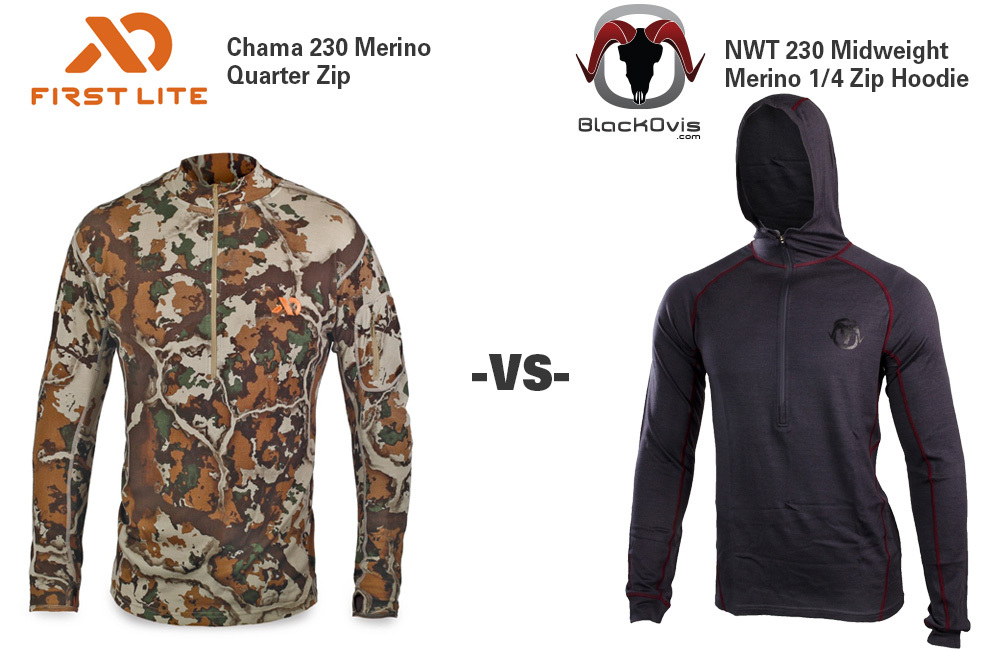 If you love spending time outdoors, I’m sure you’ve come to realize how vital your base layers are to the quality of your overall experience. Base layers provide warmth and comfort, and a good base layer is probably one of the most underrated pieces of equipment we have at our disposal as outdoorsmen. When the guys at BlackOvis mentioned to me that they were interested in comparing their BlackOvis brand of base layer with one of the industry leaders in merino base layers - First Lite - I was all over the idea. I don’t think you can have enough base layers, because as the temps drop you can just throw one on over top of the other and layer to keep warm. From late October on, if I’m out in the field, I almost always have at least 2 light to midweight base layers on. Continue reading →
If you love spending time outdoors, I’m sure you’ve come to realize how vital your base layers are to the quality of your overall experience. Base layers provide warmth and comfort, and a good base layer is probably one of the most underrated pieces of equipment we have at our disposal as outdoorsmen. When the guys at BlackOvis mentioned to me that they were interested in comparing their BlackOvis brand of base layer with one of the industry leaders in merino base layers - First Lite - I was all over the idea. I don’t think you can have enough base layers, because as the temps drop you can just throw one on over top of the other and layer to keep warm. From late October on, if I’m out in the field, I almost always have at least 2 light to midweight base layers on. Continue reading → -
Crispi Nevada Legend GTX Insulated Hunting Boot Review
 One of the first things you learn as a mountain hunter is that if your feet aren’t happy, you aren’t happy. Your boots can literally make or break your whole hunt (or scouting trip, shed hunt, etc). A quality, durable, well-fitting and broken-in boot is an overlooked necessity that should be one of the most sought after items in your gear list. I refuse to let something like poor choice of footwear keep me out of the mountains!
One of the first things you learn as a mountain hunter is that if your feet aren’t happy, you aren’t happy. Your boots can literally make or break your whole hunt (or scouting trip, shed hunt, etc). A quality, durable, well-fitting and broken-in boot is an overlooked necessity that should be one of the most sought after items in your gear list. I refuse to let something like poor choice of footwear keep me out of the mountains!
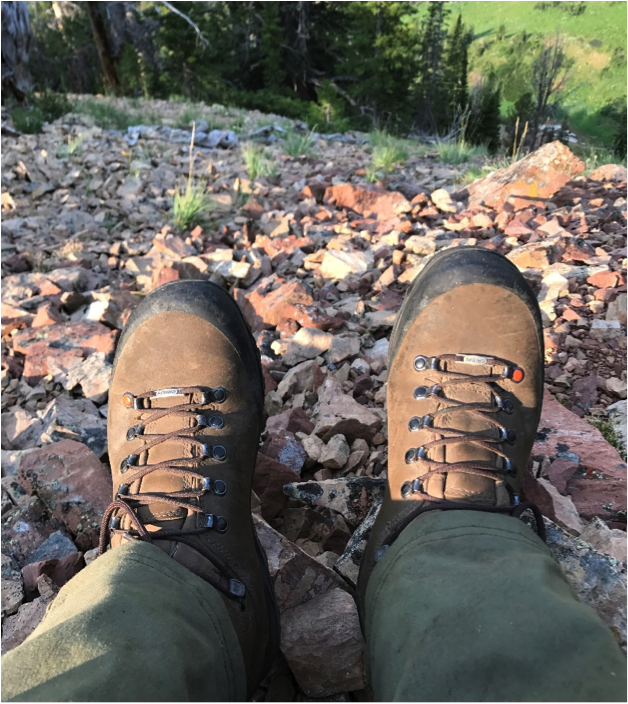 Comfortable feet at 9300'
Continue reading →
Comfortable feet at 9300'
Continue reading → -
Stealth Cam – Brand Overview
 Ask any serious big game hunter what brand of trail cameras they use to keep track of the big game animals they’re after and Stealth Cam will definitely come up in the conversation. Stealth Cam is not new to the scene, either; they’ve been around since 2000. Prior to Stealth Cam’s launch, the trail camera market was not what it is today. There were options available, but not nearly like the selection we have at our fingertips now, and they were built differently and not near as functional or user-friendly as what’s currently available. The creators of Stealth Cam decided to change that. They saw a niche that needed to be filled. Their goal was to create a functional wildlife monitoring system using the latest technology that would be affordable to the average sportsman.
Over the years, Stealth Cam has refined their product. They’ve had setbacks just like any new company can and usually does, but through increased effort into the engineering process they’ve been able to overcome those setbacks and in turn create even more highly functioning products. The drive to become the best in the industry has ultimately benefited the customer by far the most as their technology and products have improved, from the looks and ergonomics down to the components and circuitry. For example, until just recently, Stealth Cam had been found to have one of the slower trigger speeds as well as recovery speed times. But, thanks to their engineers they were able to fix that, and now they boast some of the fastest cameras on the market. Just goes to show that when companies compete the real benefactor is the customer!
Below is a quick overview of a few of the top-of-the-line models currently offered from Stealth Cam and sold on BlackOvis.com Continue reading →
Ask any serious big game hunter what brand of trail cameras they use to keep track of the big game animals they’re after and Stealth Cam will definitely come up in the conversation. Stealth Cam is not new to the scene, either; they’ve been around since 2000. Prior to Stealth Cam’s launch, the trail camera market was not what it is today. There were options available, but not nearly like the selection we have at our fingertips now, and they were built differently and not near as functional or user-friendly as what’s currently available. The creators of Stealth Cam decided to change that. They saw a niche that needed to be filled. Their goal was to create a functional wildlife monitoring system using the latest technology that would be affordable to the average sportsman.
Over the years, Stealth Cam has refined their product. They’ve had setbacks just like any new company can and usually does, but through increased effort into the engineering process they’ve been able to overcome those setbacks and in turn create even more highly functioning products. The drive to become the best in the industry has ultimately benefited the customer by far the most as their technology and products have improved, from the looks and ergonomics down to the components and circuitry. For example, until just recently, Stealth Cam had been found to have one of the slower trigger speeds as well as recovery speed times. But, thanks to their engineers they were able to fix that, and now they boast some of the fastest cameras on the market. Just goes to show that when companies compete the real benefactor is the customer!
Below is a quick overview of a few of the top-of-the-line models currently offered from Stealth Cam and sold on BlackOvis.com Continue reading → -
Badlands Magnetic Binocular Pouch Review
I take my binoculars anywhere and everywhere outdoors every time I go. It doesn’t matter if I’m scouting, hunting, shed hunting, driving through the canyon, or even on a walk with my family in the foothills, I’ve always got my binoculars handy because you never know what Mother Nature has in store for you! When I started out hunting, I used/borrowed a pair of $50 binoculars that my dad kept in his closet but seldom used. I did my best to take care of them, but looking back I think I was actually pretty careless. I’d carry them around my neck on a strap with nothing more to protect them than a set of flip-off covers for the objective lenses and nothing covering the ocular lenses. Those binoculars took a beating, bouncing around on my chest all day and suffering whatever the elements had in store from sun, wind and dust, to rain and snow.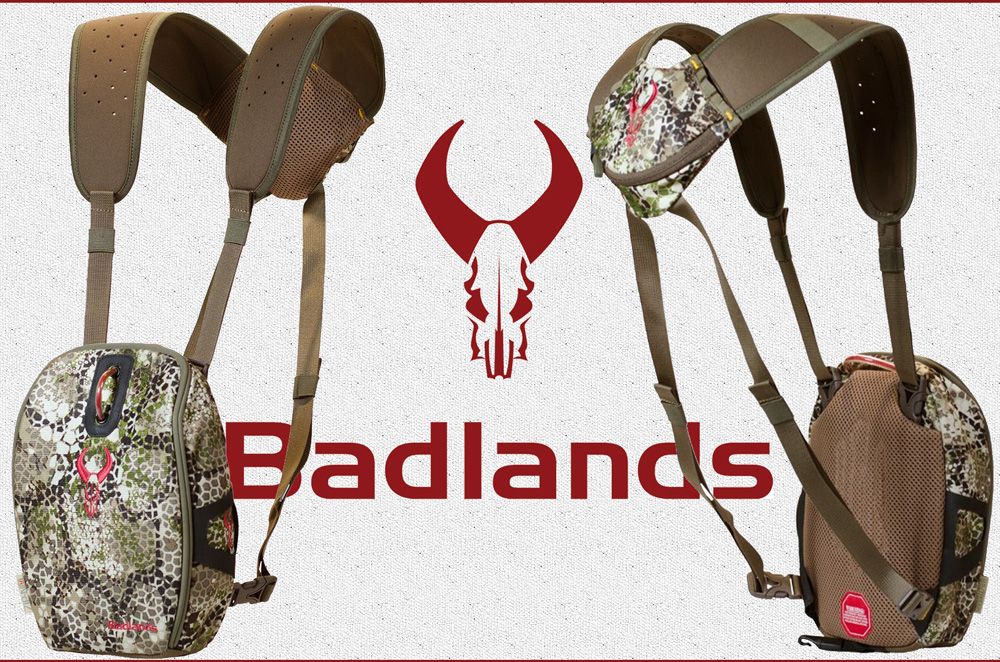 When I decided it was time to get serious about my optics and that I needed an upgrade in the binocular department, I knew that before I ever purchased a high end set of binoculars, I needed to figure out a good carry system for them. I had to have the carrying system selected and purchased before I purchased the new binoculars or else I’d be too tempted to take them out and use them just once or twice or maybe twenty times before I got around to purchasing the carrying system. I had made up my mind to not let that happen. One reason I was so adamant about having the carry system before buying the binoculars was that I’d had a friend who bought new binoculars and took them out into the field before getting a carrying case. Long story short, he ended up dropping them while coming down a wet hillside when he fell and actually cracked one of the lenses. I did not want to chance ending up in that situation!
When I first began researching the options available for binocular carrying cases, I was a little naïve in my selection process. I knew I wanted 10x42 binoculars, a pouch that rode on my chest, and something that offered complete protection when shut. That was about the extent of my criteria. I looked up different options online and read about them, but what eventually helped sway my decision was some input from close friends to get the Badlands Magnetic Binocular Pouch.
When I decided it was time to get serious about my optics and that I needed an upgrade in the binocular department, I knew that before I ever purchased a high end set of binoculars, I needed to figure out a good carry system for them. I had to have the carrying system selected and purchased before I purchased the new binoculars or else I’d be too tempted to take them out and use them just once or twice or maybe twenty times before I got around to purchasing the carrying system. I had made up my mind to not let that happen. One reason I was so adamant about having the carry system before buying the binoculars was that I’d had a friend who bought new binoculars and took them out into the field before getting a carrying case. Long story short, he ended up dropping them while coming down a wet hillside when he fell and actually cracked one of the lenses. I did not want to chance ending up in that situation!
When I first began researching the options available for binocular carrying cases, I was a little naïve in my selection process. I knew I wanted 10x42 binoculars, a pouch that rode on my chest, and something that offered complete protection when shut. That was about the extent of my criteria. I looked up different options online and read about them, but what eventually helped sway my decision was some input from close friends to get the Badlands Magnetic Binocular Pouch.
 Continue reading →
Continue reading →
